CAP national strategic plans will fail to deliver on EU Green Deal environmental and climate objectives

The overwhelming majority of Common Agricultural Policy strategic plans delivered by Member States to the European Commission fail to adequately address the urgent crises of biodiversity loss and climate change.
This is the conclusion of a new assessment conducted by the European Environmental Bureau and BirdLife Europe, which found that the national strategic plans fall short on proclaimed ambitions and lack clear targets, measures, and funding to halt biodiversity loss and cut greenhouse gas emissions[1].
The assessment scored 18 out of the 23 strategic plans submitted to date as either poor or very poor across the dimensions explored, which covered: space for nature, protection of grasslands, peatlands and wetlands, money for biodiversity protection and climate action, harmful subsidies, and the involvement of environmental NGOs.
The strategic plans detail how EU Member States will implement the reformed Common Agricultural Policy, which the European Commission intends to be fairer, greener, and more flexible.
At a critical period in which the national strategic plans are being negotiated between the Member States and the Commission, the assessment indicates that they are severely misaligned with the targets of the European Green Deal and the environmental and climate commitments made in the EU Farm to Fork and Biodiversity Strategies.
“The CAP makes up 31% of the total EU budget – it is unacceptable and irrational to use public money to continue to fuel the destruction of nature. The Commission must push Member States to use this money to improve the state of nature, and bring back biodiversity across Europe,” said Tatiana Nemcova, EU Agriculture Expert, BirdLife Europe.
“These plans are neither green nor fair. Member States are failing to live up to Green Deal targets and need to beef up their plans with adequate funding and measures to deliver for the climate and nature,” said Sophia Caiati, Policy Assistant for Agriculture, EEB.
As the scorecards below show, 18 out of 23 plans score only poor or very poor across the different dimensions, indicating that the overwhelming majority of CSPs will fall short of what has been promised with regards to environmental and climate objectives.
#Space4nature
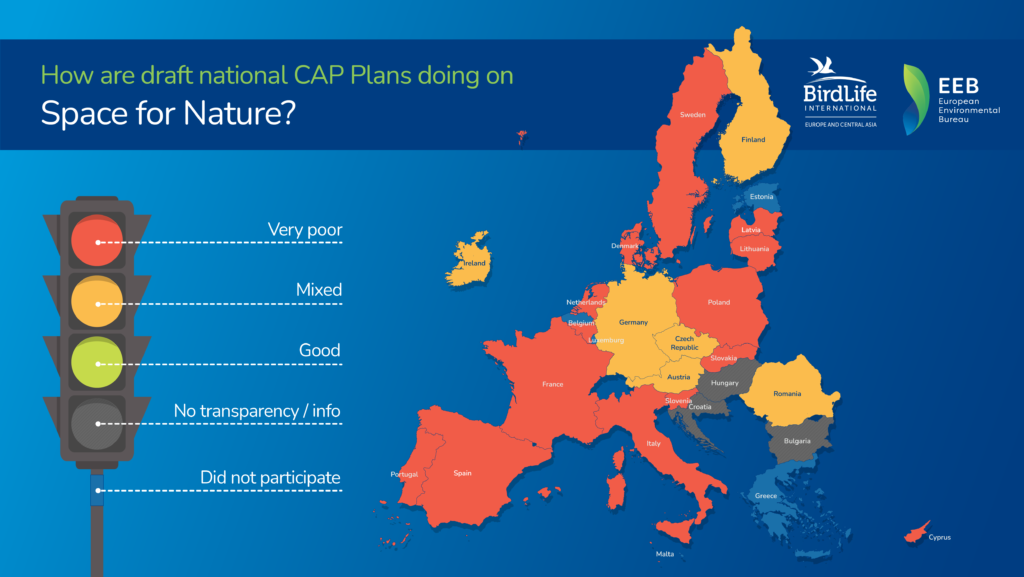
Protection of grassland
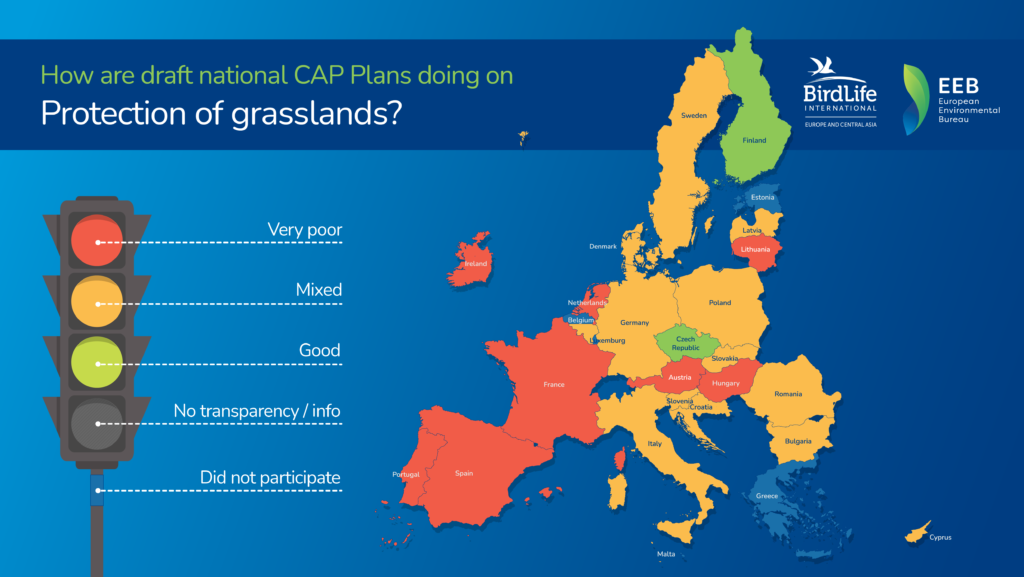
Protection of peatlands and wetlands
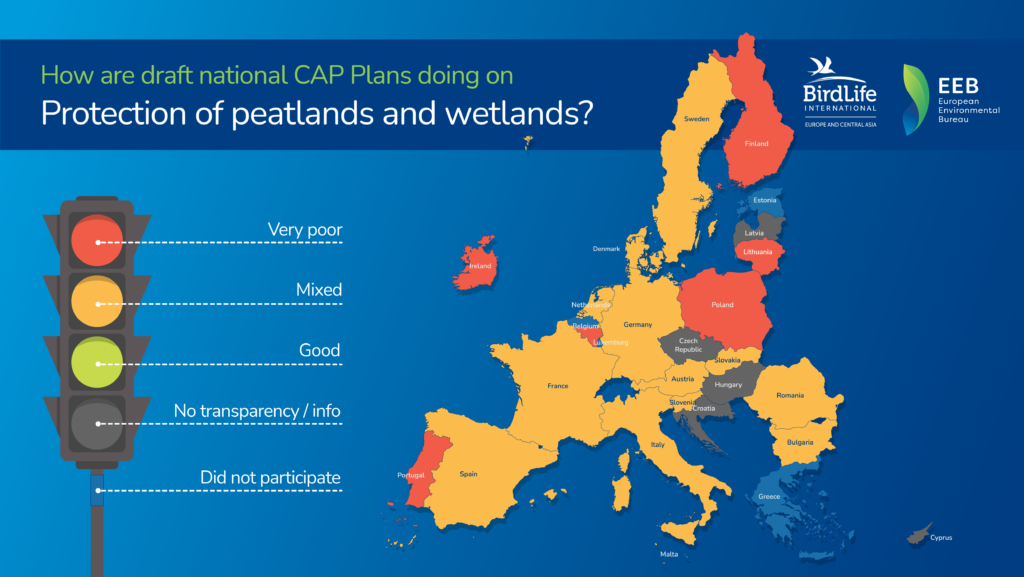
Money for biodiversity protection
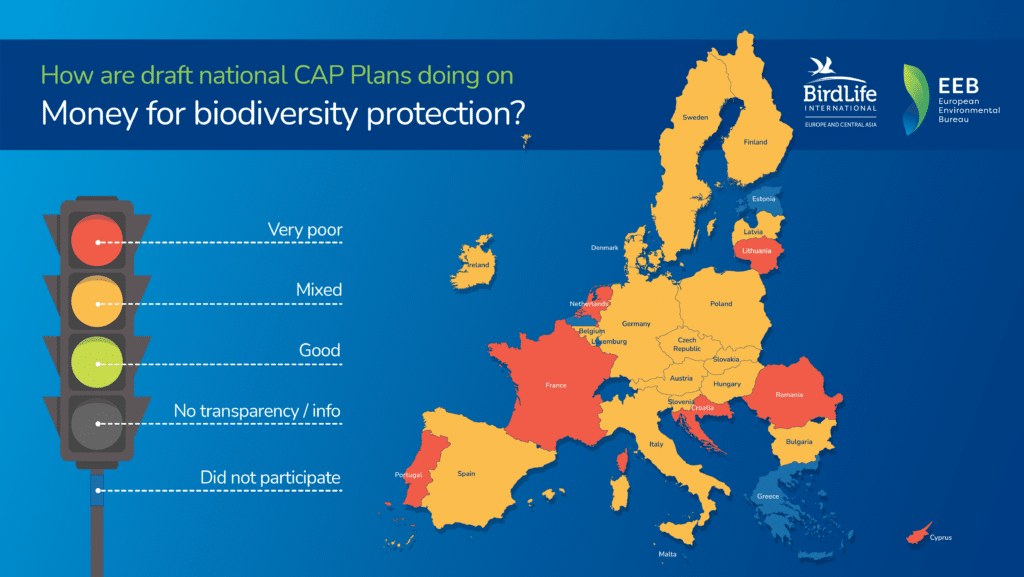
Money for climate action
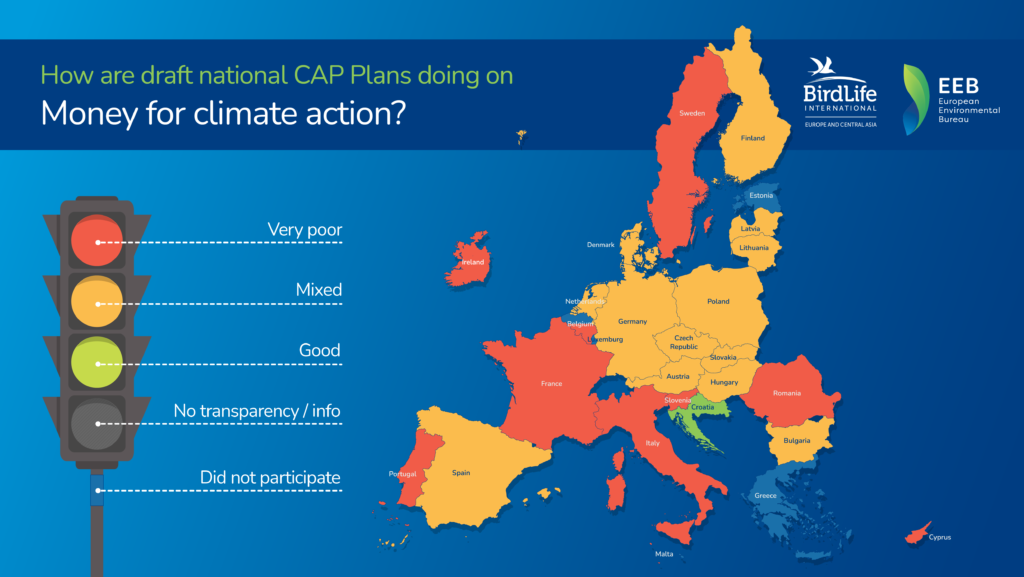
Harmful subsidies
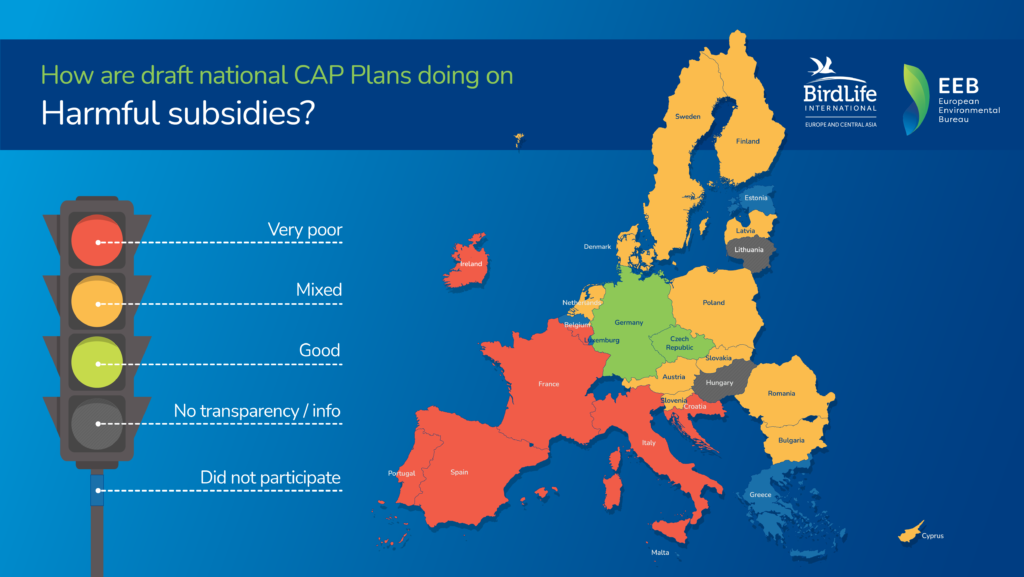
Involvement of environmental NGOs
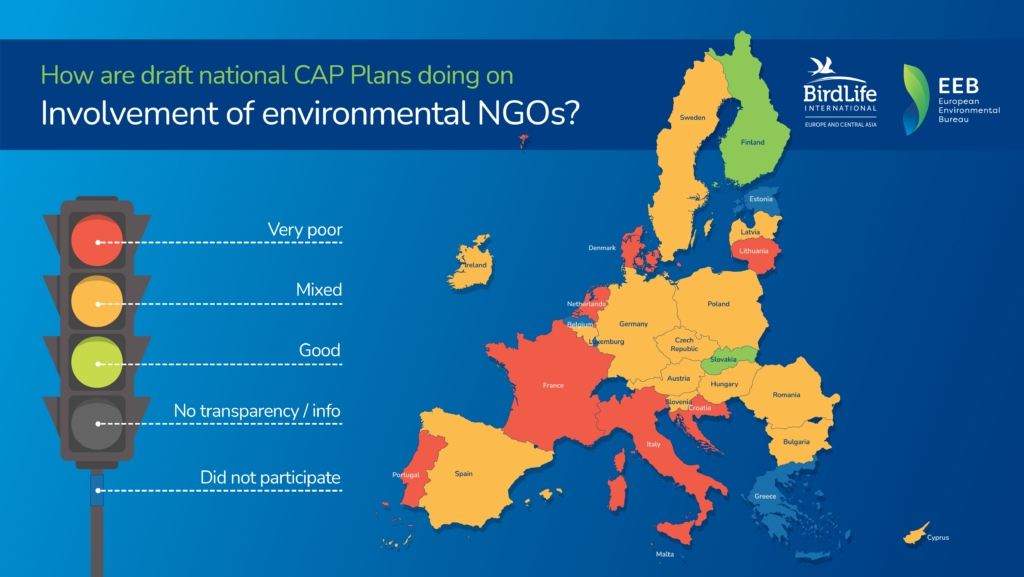
The EEB and BirdLife Europe urge the European Commission to send Member States robust and ambitious observations to revise their strategic plans and make these observations and consequent responses available for public scrutiny.
Furthermore, the Commission must not approve any strategic plans failing to deliver on the environmental objectives of the CAP or breaching EU legislation.
Notes for editors:
[1] The assessment was conducted by national experts screening the 23 available draft plans against seven key criteria of the EEB’s 10 Tests for a Green Deal Compatible CAP, using multiple choice questions. The analysis was then translated into a traffic light benchmarking system. This work was built upon a preliminary assessment conducted in November 2021 using the same methodology.
[2] Further information on environmentally harmful subsidies can be found here: Reform $1.8 trillion yearly environmentally harmful subsidies to deliver a nature-positive economy.
ENDS.
For further information, please contact:
Tatiana Nemcova, BirdLife Europe, [email protected]
Sophia Caiati, European Environmental Bureau, [email protected]
You might also be interested in:
 | Stichting BirdLife Europe gratefully acknowledges financial support from the European Commission. All content and opinions expressed on these pages are solely those of Stichting BirdLife Europe. The European Commission is not responsible for any use that may be made of the information it contains. |









